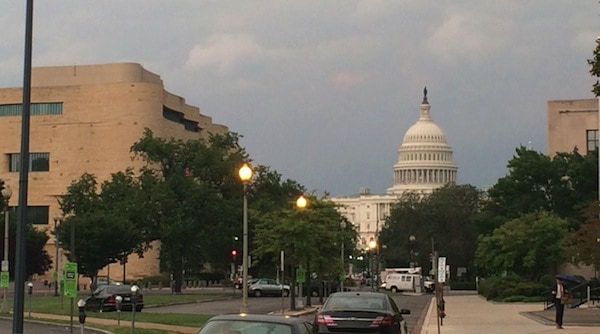Congress has a spending plan. And it rejects most (but not all) of President Donald J. Trump’s priorities. It also includes more money for most federal Indian programs.

Photo credit: Mark Trahant
But remember: This is a short budget. It’s only enough money to fund government operations through the end of September.
House Appropriations Chairman Rodney Frelinghuysen (R-NJ) said: “This package of the remaining Appropriations bills is the result of over a year’s worth of careful and dedicated efforts to closely examine federal programs to make the best possible use of every tax dollar. This legislation will fund critical federal government activities, including our national defense, and enact responsible funding decisions to target U.S. investments where they are needed the most. It also maintains and enhances policies that bolster economic growth and support the core values that our nation is built upon.”
About a week ago I wrote that the best option for Congress was for “the White House to work with Democrats and spend money on their priorities. It’s the basic formula that has led to enactments of budgets for the past 8 years. The bargain would mean continued spending for domestic programs as well as add money to the military. The wall? No. Cutting support for Planned Parenthood? Get serious. And health care funding? That’s why it’s called the art of the deal.”
That’s essentially what happened. But it wasn’t the White House. It was Republican leaders in Congress that did the deal. The military budget increased $25 billion over current levels. There was also an additional $1.5 billion for border security.
Both the Bureau of Indian Affairs and the Indian Health Service will get a slight boost from this budget.
From the House Appropriations Committee:
American Indian and Alaska Native Programs – The Bureaus of Indian Affairs and Education are funded at $2.9 billion – an increase of $69 million above fiscal year 2016. This includes necessary increases for schools, law enforcement, road maintenance, and economic development.
The Indian Health Service is funded at $5.0 billion – an increase of $232 million above the fiscal year 2016 enacted level. This includes operating costs for staffing at new facilities, and increases for rising contract support costs, medical inflation, and a growing and aging population.
But the Environmental Protection Agency takes a hit. “The bill funds the EPA at $8.06 billion, a reduction of $81.4 million below the fiscal year 2016 enacted level and $209 million below President Obama’s budget request,” the Committee said. “Within this total, the EPA’s research and regulatory programs are reduced by $52 million below the current level and over $300 million below the previous administration’s request.”
However the bill will add $75 million to speed up Superfund cleanup projects.
The fight over the National Endowments for the Arts and Humanities is saved for another day too, the bill includes $150 million for each of the endowments, $2 million above the fiscal year 2016 level. A similar story for the Corporation for Public Broadcast. The bill includes an advance appropriation of $445 million for CPB for fiscal year 2019, which is the same level of advance funding provided in the fiscal year 2016 enacted level and the previous Administration’s budget request.
Another White House budget item for next year — cutting funding for the Violence Against Women Act — is also a no go in this budget. The House committee says “funds are increased within the highest-priority grant programs, including $481.5 million for the Violence Against Women programs and $403 million for Byrne Justice Assistance Grants.”
Congress must still vote on the spending bill. But the prospects are strong because Democrats are on board so it only takes a handful of Republicans to make it law.
More on the budget here.
Cross-posted from Trahant Reports

